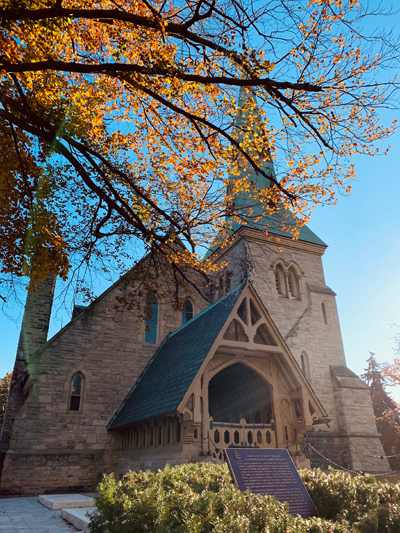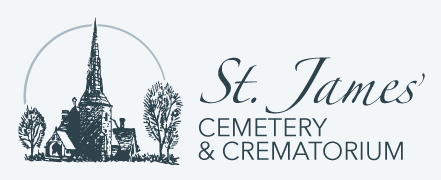John G . Howard, who ranks as one of Toronto’s great contributors to early development in architecture, planning and engineering, prepared the layout for St. James’ Cemetery over a hundred and fifty years ago in 1842. In his picturesque plan he reserved the finest building site for a “mortuary chapel” on a knoll near the southwest corner of the cemetery property.
. Howard, who ranks as one of Toronto’s great contributors to early development in architecture, planning and engineering, prepared the layout for St. James’ Cemetery over a hundred and fifty years ago in 1842. In his picturesque plan he reserved the finest building site for a “mortuary chapel” on a knoll near the southwest corner of the cemetery property.
The architectural firm of Cumberland and Storm, was selected to prepare plans for the Chapel at a meeting at St. James’ Cathedral on April 27, 1857. Construction was in progress by July 1859. The structure is comprised of Georgetown stone and “white” brick with Ohio stone trim.
Cumberland and Storm created an architectural gem in this rough cut stone chapel with its steeply pitched roof, deep caves and low sidewalls, protective entrance porch, monumental bell tower and broad spire rising gracefully above the chapel nave.
The chapel interior is equally attractive with sensitive yet bold detailing. The deep-set trefoil side windows glazed in fine stained glass, the heavy timbered roof structure traced with light coming from triangular dormers, the wood paneling and the stained glass chancel windows are all skillfully treated.
The Chapel of St. James-the-Less is an important part of our Canadian cultural heritage and is unquestionably one of the finest examples of Gothic Revival church architecture in Canada.
Historically St. James’ Cemetery is the oldest cemetery still operating in central Toronto. The cemetery was opened in July of 1844. At that time most of the city’s population of 18,000 lived south of Queen Street and the cemetery location at Bloor and Parliament Streets must have been regarded as being well out in the country.
Recognizing the growing trend towards cremation in many parts of the world, a crematorium was added in 1948. To date over 95,000 interments and 114,000 cremations have taken place at the cemetery.
In 1990, The Government of Canada (Parks Canada) National Historic Sites – Directory of Designations of National Historic Significance in Canada – designated the Cathedral’s cemetery Chapel of St. James-the-less as a significant example of Gothic Revival style, 1860-61.
Learn more about our Historic Designation here.
A more in-depth history is available in PDF format to download: “An Illustrated History of St. James’ Cemetery”: Download article
